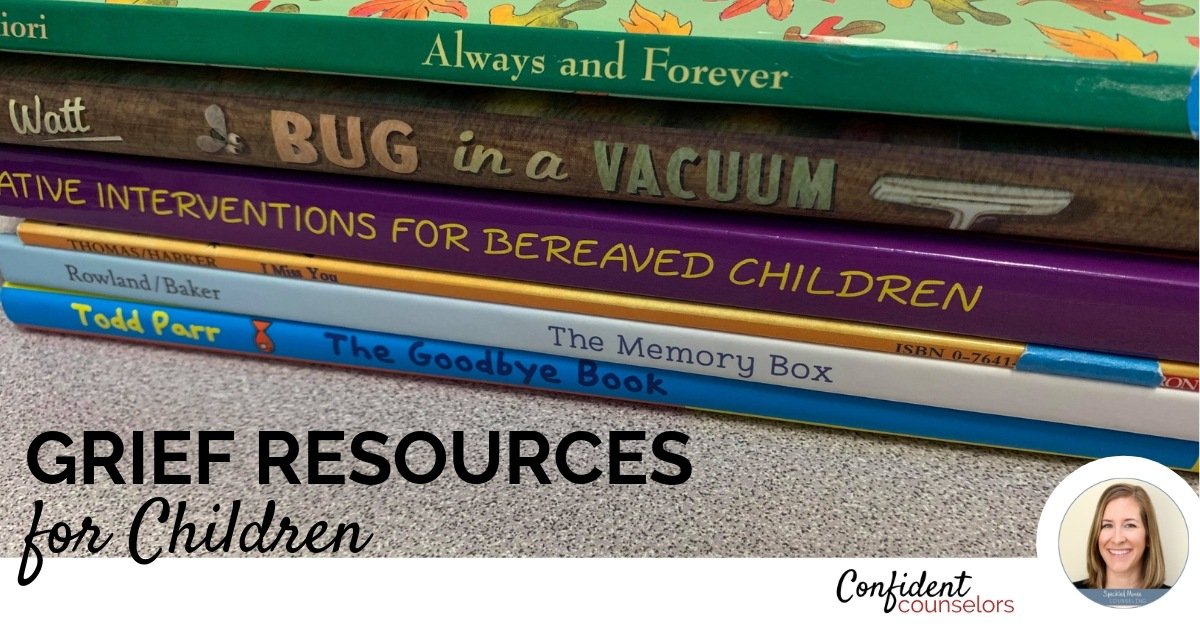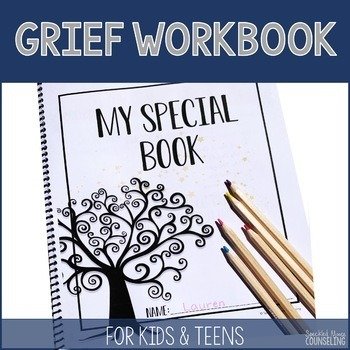We all strive to do the best we can by “our” kids, and I’ve noticed many requests for grief counseling resources for children recently. I’ve been deeply impacted by students who died and children who experienced the death of loved ones. As I write this, I picture you on the other side of the screen nodding in agreement. I believe this to be a universal connection that we have - and if you’re new to the counseling field - someday, unfortunately, you’ll know what I mean in a different way.
Grief counseling resources for kids are the ones that we hate to use. The last thing anyone wants is to scramble looking for books and materials when a grief book or resource is needed. To save you a step, I’ve compiled some favorites, in no particular order:
Why I Love It - Sometimes I think in counseling there’s this idea that it’s all talk, talk, talk. I love this resource because it provides a ton of engaging activities and games to use with children. Incorporating play-based counseling games and activities honors the culture of childhood and allows children to process grief in a developmentally-appropriate manner.
Why I Love It - The Memory Box does a fantastic job of highlighting some questions and emotions children face following a death, specifically being afraid that the loved one will be forgotten. It sets the stage to create a memory box with children and have them clearly understand the purpose of the activity. There is no mention of any specific faith or religion, and the beautiful illustrations are a bonus.
Why I Love It - Well, this is a little awkward: I created it. I’ve had many grieving students over my career and I was searching constantly for resources that would meet their needs. I found that some students really needed to have their emotions validated and grief process normalized. When I couldn’t find what I needed, I made it. I took what I verbalized and made it more concrete and tangible by putting it down on paper. I also wanted something that other counselors could customize as every grief journey is unique.

Why I Love It - I found this one during a school book fair. I enjoy it because it hints at the seasonal and cyclical nature of death and grief. The story illustrates how multiple characters are experiencing grief following the death of their friend. Eventually, the animals come together to honor their friend at the end. I love how it shows children that there can be joy following grief.
Why I Love It - This is a great book for younger children as it does a nice job of explaining death in concrete terms and grieving in a culturally-sensitive manner. It breaks down adult language and terms around death and grief while taking the reader through what happens following a death. I Miss You explicitly acknowledges different belief systems without going into religious or cultural specifics.
Why I Love It -Sesame Street has a magical way of taking difficult topics and making them comfortable and accessible for children. It provides excellent guidance for families to help navigate grief, with an emphasis on validating emotions. The story book, featuring popular characters from the show, gives wonderful examples as to how children can remember a loved one. As a bonus, the resource also comes in Spanish.
Why I Love It - Todd Parr has a gift in reaching children with his messages and illustrations. This story is simple, and never explicitly states there has been a death. It’s fair for the reader to assume that there is a death due to the illustrations (a frowning goldfish is alone in a fishbowl and other images show that there used to be 2 fish), but the generalized nature of the story & emphasis on emotions makes it a book that could be flexible to other types of goodbyes that children experience.

Why I Love It - The Invisible String is a comforting story to many, regardless of age. It explains that people are always connected to those they love, even when they aren’t physically present, by an invisible string. I have found that students enjoy carrying an actual string to represent the story so that they have a tangible reminder of the message. This book also works well for children struggling with family separations or separation anxiety. Of note, the book specifically mentions heaven following a question by a character in the story.
Why I Love It - This story follows a fly who gets stuck in a vacuum and takes the reader through the five stages of grief based on the Kübler-Ross model. It’s not a book I’d use with young children as they are unlikely to understand the metaphor. That being said, when kids do get it, it brings a bit of humor to the grief process with the animated illustrations.
Why I Love It - Who has time to search for resources? This list of websites provides incredible model policies for grief responses, developmental guides, letter templates, etc. Having the links in one spot makes it easy to find when the moment comes & you find yourself needing grief-related psychoeducation.
Most Importantly ...
Grief counseling resources can give us a lot of different avenues to process grief with kids. I’ve learned so much by listening to children as they traveled on their grief journey, and I’m honored to be able to use the gifts and lessons they gave me to help others.
My biggest takeaways have been the importance of simple moments and experiences with those we love: waiting for the bus, playing hide & seek in the house, and seeing that special person on the sidelines of a game. Regardless of how many grief counseling resources for children you have on the bookshelf, what I want you to remember, more than anything, is that the most important thing you can give to your students is your presence.















